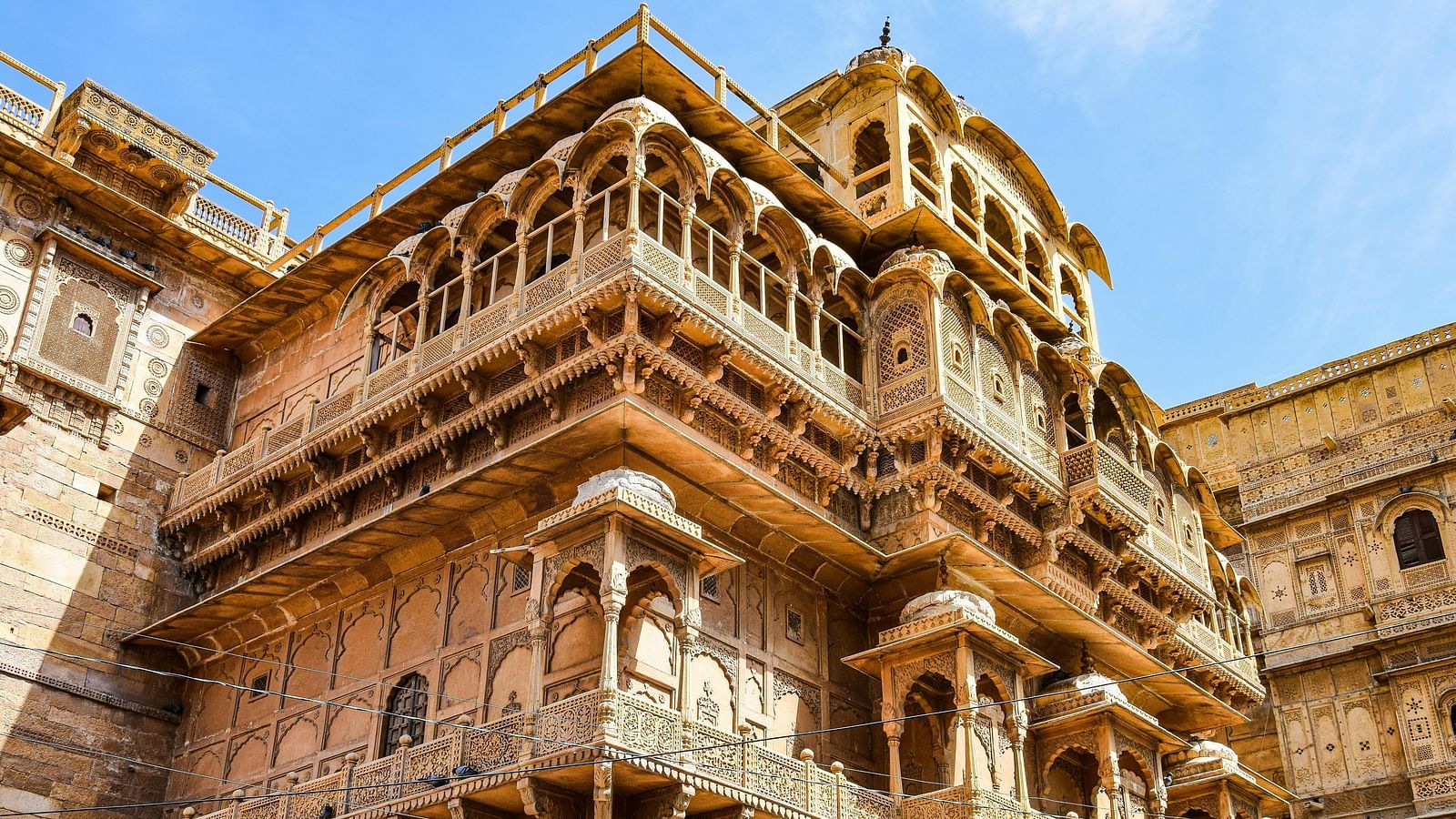- Heritage Desert Camp Experience in Rajasthan
- Weekend Getaway from Ahmedabad to the Thar Desert
- Lunch at Manvar Shergarh Between Jodhpur and Jaisalmer
- Luxury Glamping in Rajasthan: A Desert Escape at Manvar Kumat
- Things to Do in Rajasthan
- Camel Safari Jaisalmer
- Your Ultimate Rajasthan Desert Trip
- Sun City of India
- Desert Resort near Jodhpur
- History of Mehrangarh Fort
- Rajasthani Cuisine
- Places to Visit Near Jodhpur
- History of Jaisalmer Fort
- Cultural Heritage of Rajasthan
- Jodhpur Temples
- Places Nearby Jaisalmer
- Famous Art and Craft of Rajasthan
- Blue City Jodhpur
- Weekend Getaway near Jaipur
- Jaisalmer Desert Festival
- Jodhpur or Jaisalmer Which is Better
- Jodhpur Jaisalmer Itinerary
- Weekend Getaways Near Delhi
- Khichan Cranes and Lohawat Bishnoi Temple, Rajasthan
- Bhadariya Temple and Ramdevra Temple
- Culinary Delights of Jodhpur: A Foodie's Paradise
- Mehrangarh Fort: Journey through Bollywood’s Iconic
- Jaisalmer's Rajputana Glory: Embracing A Golden Legacy
- Starry Nights and Desert Dreams with MANVAR
- Rajasthani Folk Dances: A Vibrant Display of Tradition
- The Village Walk Experience near MANVAR
- Exploring Nearby Attractions
- Shopping in Jaisalmer
- Camels: The Ship of the Desert
- Unleashing the Thrill of Dunes
- Embracing Rajasthan's Fashion Heritage
- Jaisalmer's Film Connections
- Festivals and Folklore in Jaisalmer
- Chasing the Golden Hour
- Road trip through Rajasthan
- Architectural Marvels of Jaisalmer
- Exploring the Thar Desert
- Why is Jaisalmer Called Golden City?
- Exploring the Wild Side of Thar Desert
- The Timeless Beauty of Salim Singh Ki Haveli

History of Jaisalmer Fort: The Golden Crown of Rajasthan
Jaisalmer, often referred to as the 'Golden City', is a mesmerising destination that embodies the exuberance of Rajasthani royalty and culture. Nestled in the heart of the Thar Desert, Jaisalmer is a city where time seems to stand still, with its sandstone architecture glowing in the desert sun. The vibrant bazaars, grand havelis, and the warm hospitality of the locals all contribute to the history of Jaisalmer Fort.

About Jaisalmer Fort: A Historical Overview
Jaisalmer Fort, also known as Swarn Durg, Sonar Quila or the Golden Fort, was built in 1156 AD by the Bhati Rajput ruler, Rawal Jaisal. The fort's construction marked the founding of the city of Jaisalmer, strategically positioned on the trade routes between India and Central Asia. An interesting trivia about Jaisalmer Fort is that its nickname, Sonar Quila (meaning Golden Fortress in Bengali), gained widespread popularity among tourists after the famous Bengali film of the same name was shot here by the legendary filmmaker Satyajit Ray. Rising from Trikuta Hill, the fort's golden sandstone walls blend seamlessly with the surrounding desert landscape.

Battles and Invasions in the History of Jaisalmer Fort
Over the centuries, this majestic fort became a beacon of power and wealth, attracting the attention of numerous invaders. The fort withstood a series of intense battles and sieges, each leaving its mark on the fort’s history. In the 13th century, it endured a fierce assault by the Sultan of Delhi - Alauddin Khalji, who coveted the fort for its strategic importance. Despite the Rajput's valiant efforts, the fort eventually fell into Khilji's hands, but not without a heroic defence that became legendary.
The rich history of the Jaisalmer Fort has also witnessed the Mughal Empire's ambitions, yet the brave Rajput rulers managed to maintain a degree of independence through strategic alliances and fierce resistance. It wasn't until the Mughal period that Jaisalmer became a tributary state, allowing the fort to retain its autonomy while acknowledging Mughal sovereignty. Despite these numerous challenges, the fort remained a symbol of Rajput's valour and resilience, weathering every storm that came its way.

Jaisalmer Fort in the Modern Era
Today, Jaisalmer Fort is one of the world’s largest inhabited forts and holds significant recognition as a UNESCO World Heritage Site. It is home to a vibrant community, including descendants of the original Rajput families, who continue to uphold the traditions and culture of their ancestors. The fort's massive gates, winding pathways, intricately carved Jain temples, and stunning palaces tell stories of a glorious past while blending with the bustling life within its walls. The fort's resilience and the living history it embodies make it a truly captivating destination for anyone looking to explore the rich cultural tapestry of Rajasthan.
As you explore the captivating history of Jaisalmer Fort, enhance your experience with a luxurious stay at MANVAR Resort and Desert Camps. Amidst the golden dunes of Thar, our resort seamlessly combines rustic charm with modern elegance, offering an authentic taste of Rajasthan. While here, indulge in our array of welcoming camping accommodations and savour sumptuous Rajasthani cuisine at our restaurant. Whether you're admiring the golden fort or enjoying a peaceful night under the stars, MANVAR is your gateway to the timeless beauty and culture of this royal land.